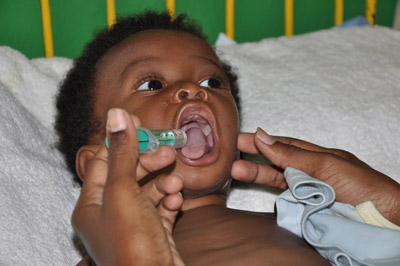The Clinical Significance Of Other Diarrhea Diseases To Human’s Health
Acute Diarrhea Diseases

Acute Diarrheal Diseases Of Children
Acute diarrheal diseases are the major killers of infants and young children, accouting for 30 to 50% of deaths below the age of 5 years. In the developing regions, especially in Africa, 2 million children die annually from diarrheal disease other than cholera. Disorders in which three or more watery stools are passed daily with or without vomiting are included under this group.
Etiological agents: The most well known pathogens are shigella, salmonella, enteropathogenic E.Coli, Vibrio cholera, El tor vibrios E. histolytica and G. lamblia and these account for only about 20% of the total, the remaining 80% being due to other agents which number about twenty. Diarrhea results either from enterotoxin or through invasive mechanisms. The clinical picture and management are the same as described under cholera.
Clinical Manifestations Of Viral Gastroenteritis

Viral Gastroenteritis
Viruses account for the majority of diarrheal episodes in infants and young children in both developed and developing countries. These viruses include rotavirus, Norwalk and Norwalk-like agents and a number of other viral agents whose causative role is not yet clearly established.
Clinical features: Rotavirus affects mainly infants and young children aged 6 months to 2 years. Incubation period ranged from 1 to 7 days but usually it is less than 48 hours. Vomiting occurs early and it precedes diarrhea. Diarrhea extends over 5 to 7 days but virus is shed up to 10 days. Asymptomatic infections and mild disease may occur during outbreaks. Breast milk may jave a protective role due to presence of maternal IgA antibodies.
Treatment: Rotavirus diarrhea responds to standard rehydration therapy as described under cholera.
Norwalk And Norwalk-Like Agents

Norwalk And Norwalk-Like Agents
Since 1972, these viruses have been identified as the cause of outbreaks of generally mild gastroenteritis occurring in the school, community and family settings. Norwalk agent was first isolated from Norwalk in Ohio state (USA). Virus particles resembling Norwalk agent morphologically, but serologically distinct are also identified as causing outbreaks of gastroenteritis.
Other viral pathogens include adenovirus, astrovirus, calcivirus and minirotavirus. These produce diarrheas of varying severity.
Diarrhea Routine Vaccination

Infectious Diseases
Campylobacter Jejuni
Epidemiology: Campylobacter jejuni (previously known as vibrio fetus) is found in the intestines of birds, particularly in chicken, turkeys, wild birds and also in dogs, cats and calves. The organisms are spread by fecal-oral route. They are acquired from sick puppies, kitten or infected cases. Campylobacter jejuni is ubiquitous and has been isolated as the pathogen in several outbreaks. Normal gastric acidity kills the organisms.
Pathogenesis: Campulobacter jejuni invades tissues and produces diffuse blood exudative enteritis and non-specific colitis. No enterotoxin has been isolated. Bacteremia and metastatic lesions may complicate the primary lesion.
Clinical Features: Incubation period is 1 to 7 days. Main symptoms include watery or bloody diarrhea, abdominal pain, malaise, fever, vomiting and constitutional symptoms. The severity may vary. On an average, there may be 8 to 10 bowel movements in a day. Recovery occurs within a week. Rarely, a prolonged illness resembling typhoid and meningitis may develop.
Treatment: Since the infection is self- limiting, fluid and electrolyte replacement from the mainstay of therapy. The organisms respond to erythromycin given orally in a dose of 250 mg every 6 hours. Resistant cases respond to tetracycline in a dose of 250 to 500 mg every 6 hours. For bacteremia, gentamicin or chloramphenicol are given systematically.
Prevention: The organisms are destroyed by proper cooking and storage of animal foods, pasteurization of milk and provision of protected water supply, chlorination of water kills the organisms.
© 2014 Funom Theophilus Makama







